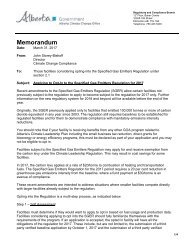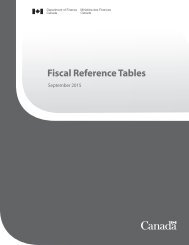China’s National Emissions Trading System
Chinas_National_ETS_Implications_for_Carbon_Markets_and_Trade_ICTSD_March2016_Jeff_Swartz
Chinas_National_ETS_Implications_for_Carbon_Markets_and_Trade_ICTSD_March2016_Jeff_Swartz
Create successful ePaper yourself
Turn your PDF publications into a flip-book with our unique Google optimized e-Paper software.
Global Economic Policy and Institutions<br />
1<br />
1. INTRODUCTION<br />
The People’s Republic of China has actively<br />
participated in the global carbon market<br />
since 2005 through the Clean Development<br />
Mechanism (CDM) under the United Nations<br />
Framework Convention on Climate Change<br />
(UNFCCC). The CDM was the world’s first global<br />
carbon market, allowing developing countries<br />
who had ratified the Kyoto Protocol to develop<br />
and transfer emission reductions from lowcarbon<br />
projects to industrialised countries for<br />
compliance with their targets under the Kyoto<br />
Protocol. As a result, China now has ten years<br />
of emissions trading experience through the<br />
CDM and through piloting seven carbon markets<br />
during the past three years. Last year marked<br />
an important year for emissions trading globally:<br />
the European Union (EU) celebrated ten years of<br />
its emissions trading market in May 2015, and a<br />
historic announcement was made in September<br />
by President Xi Jinping on the American White<br />
House lawn that <strong>China’s</strong> national carbon market<br />
will be launched in 2017.<br />
The carbon markets of 2016 look very different<br />
from the carbon markets a decade ago. The<br />
world has shifted from the top-down policy<br />
architecture initiated by the Kyoto Protocol into<br />
a bottom-up architecture where governments<br />
set targets at a national level and adopt<br />
various policy approaches, not all of which are<br />
market based. This is quite distinct from the<br />
previous Kyoto approach where globally-agreed<br />
emission reduction targets for so-called Annex 1<br />
countries 1 led to the first global carbon market<br />
in the form of the CDM, joint implementation<br />
(JI), and international emissions trading. 2<br />
The current fragmentation into national and<br />
regional carbon markets may pose a challenge<br />
for creating a more globally-connected carbon<br />
market in the future. Whether such a global<br />
market emerges through bilateral “linkages”<br />
of policy programmes or through a plurilateral<br />
“carbon market club,” <strong>China’s</strong> participation will<br />
matter as both the world’s largest emitter of<br />
greenhouse gases (GHGs) and soon as the host<br />
of the world’s largest carbon market.<br />
Just as global climate policy has evolved<br />
throughout the last ten years, <strong>China’s</strong> (climate)<br />
policies have also evolved. China has slowly<br />
transitioned from being a seller of emission<br />
reduction units into the UN carbon market to<br />
establishing seven pilot carbon markets in 2011 3<br />
and is now preparing for a nationwide emissions<br />
trading system (ETS). Its experience with the<br />
CDM and subnational pilot carbon markets has<br />
given China confidence in setting a pledge of<br />
reducing carbon intensity by 60 to 65 percent<br />
by 2030 as its contribution to the new climate<br />
agreement. 4 China, through its enthusiastic<br />
participation in the Kyoto Protocol’s CDM and its<br />
efforts to pilot carbon markets at the subnational<br />
level, has embraced emissions trading more<br />
than most developing countries and this will<br />
have far-reaching policy implications in the<br />
years to come.<br />
The objective of this paper is to examine how<br />
the emergence of a national ETS in China will<br />
affect carbon market developments globally<br />
and the potential formation of plurilateral<br />
carbon markets. The paper first maps out<br />
the architecture of the new climate regime<br />
and discusses the carbon market landscape.<br />
It then explores the background of <strong>China’s</strong><br />
seven ETS pilots as well as the policy design<br />
and architecture for its forthcoming national<br />
ETS. The paper aims to help policymakers and<br />
climate change professionals better identify any<br />
potential competitiveness, carbon leakage, and<br />
free-riding implications that may arise with the<br />
launch of <strong>China’s</strong> carbon market, as these issues<br />
often accompany emissions trading policies in a<br />
world of asymmetric climate action. Therefore,<br />
it explores how carbon pricing in China may<br />
affect competitiveness and carbon leakage<br />
concerns in other countries, and consequently<br />
the design and ambition in the area of carbon<br />
markets. The paper also examines why China<br />
needs to address leakage concerns in its national<br />
ETS. Finally, the paper evaluates the linkage of<br />
ETSs and the concept of “carbon market clubs,”<br />
within the context of the Chinese ETS.







